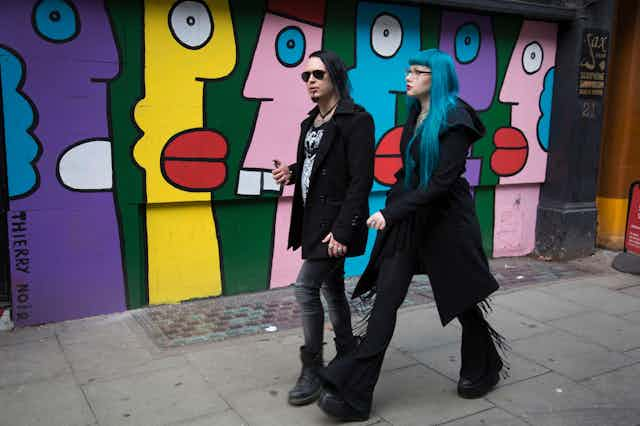Goth fashion is a subcultural style that has seen significant evolution since its inception, interweaving itself with music, art, and individual identity. Its roots can be traced back to the late 1970s and early 1980s in Britain, where it emerged from the punk movement. The goth aesthetic, with its distinctive emphasis on dark themes, has continuously adapted and transformed, ensuring its relevance across generations.
The early goth scene was characterized by a DIY ethos, which was born out of necessity during the economic recession of the late 1970s. Many young people gravitated towards alternative styles as a form of resistance against the mainstream culture that celebrated wealth and success. They raided jumble sales, thrift shops, and repurposed old clothes, leading to a unique eclecticism in their fashion choices.
At this time, goth fashion began to make its mark with ensembles that frequently included dark, ripped clothing, bondage gear, and dramatic makeup. Hair styles, often backcombed and dyed black, were critical components of the goth look, contributing to its overall rebellious spirit. Iconic figures such as Siouxsie Sioux of Siouxsie and the Banshees and Dave Vanian of The Damned not only defined the music scene but also the visual representation of goth culture.
By the mid-1980s, as goth music began to permeate mainstream trends, designers like Alexander McQueen started to embrace and incorporate goth aesthetics into their high-fashion collections. His designs often explored macabre themes that resonated with both the alternative fashion scene and high-fashion enthusiasts. This melding of styles was crucial in bringing goth elements into a broader commercial arena, albeit at the risk of diluting its original countercultural significance.
Commercial outlets like Hot Topic, which launched in 1989, provided mainstream access to goth styles with a range of affordable clothing options, making it easier for teenagers to adopt the aesthetic. However, this commercialization sparked debates over the authenticity of goth fashion. For some purists, the transition from DIY culture to commercial production represented a loss of the very essence that defined goth.
The subsequent years saw a diversification of goth fashion that expanded to include influences from other subcultures. By the late 1990s, cybergoth emerged, blending traditional goth elements with neon influences and futuristic accessories like goggles and masks. This adaptation showcases the genre’s remarkable ability to absorb new trends while maintaining its core identity.
Furthermore, the global spread of goth culture introduced new interpretations, such as the Gothic Lolita style from Japan. This aesthetic transformed its wearers into Victorian doll-like figures, introducing a softer, more whimsical aspect to goth that was previously less recognized. The influence of Japanese culture revitalized and expanded goth fashion, spawning various offshoots including the now-popular pastel goth movement.
In the contemporary context, goth fashion continues to evolve. Events like the Whitby Goth Weekend celebrate this ongoing development, encouraging participants to pay homage to gothic literature and historical fashion while expressing their unique interpretations of the style. The community around goth fashion remains vibrant, as new generations reinterpret traditional elements, incorporating them into their own identities.
This evolving nature of goth fashion is part of what makes the subculture resilient. Modern iterations of goth include influences from diverse backgrounds, contributing to a richer tapestry of styles. One particularly exciting development in recent years is the emergence of Afrogoths, who are redefining goth identity beyond its historically Eurocentric roots, thereby integrating influences from black culture into the dialogue.
Ultimately, goth is not confined to a singular appearance or style; rather, it embodies a variety of influences drawn from literature, art, and cultural history. This multifaceted quality ensures its continuous appeal, allowing it to thrive amidst changing cultural landscapes.
To illustrate the dynamic nature of goth fashion, consider this image of a man and woman dressed in quintessential goth attire against a vibrant mural background, signifying the intersection of culture and fashion.

Image: Source The Conversation
As we continue to witness the reimagining of goth by new generations, it remains clear that this subculture is a living tradition. With its ability to adapt and transform while retaining core elements, goth fashion will undoubtedly continue to inspire and influence while fostering a sense of community among those who embrace its aesthetic.
Thus, the question of when goth fashion started leads to a more profound understanding of how it has grown and morphed, reflecting the very essence of cultural evolution itself.